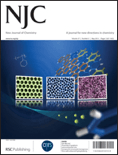
NEW JOURNAL OF CHEMISTRY
Scope & Guideline
Elevating Knowledge in Chemistry and Beyond
Introduction
Aims and Scopes
- Synthesis and Characterization of Materials:
The journal frequently publishes articles on the synthesis and characterization of new materials, including nanomaterials, metal-organic frameworks, and polymers, emphasizing their structural, optical, and electrochemical properties. - Catalysis and Reaction Mechanisms:
A significant portion of the research focuses on catalytic processes, including heterogeneous and homogeneous catalysis, electrocatalysis, and photocatalysis, investigating reaction mechanisms and optimizing conditions for various chemical transformations. - Environmental Chemistry and Sustainability:
Research articles often address environmental challenges, exploring sustainable methods for pollutant removal, waste valorization, and the development of green materials and processes. - Biochemical and Medicinal Chemistry:
The journal includes studies on the design and synthesis of bioactive compounds, drug delivery systems, and mechanisms of action, targeting applications in medicinal and pharmaceutical chemistry. - Theoretical and Computational Chemistry:
The journal publishes research that employs theoretical and computational methods to investigate molecular interactions, reaction pathways, and material properties, providing insights that complement experimental findings. - Nanotechnology and Nanomaterials:
Research in nanotechnology, including the synthesis, characterization, and application of nanomaterials for various uses, such as sensors, catalysts, and drug delivery systems, is a key focus area.
Trending and Emerging
- Green Chemistry and Sustainability:
There is a growing emphasis on research that promotes sustainable practices, including the development of eco-friendly materials, waste recycling, and energy-efficient processes, aligning with global sustainability goals. - Electrocatalysis and Energy Storage:
Research on electrocatalysis for energy conversion and storage, particularly in lithium-ion and sodium-ion batteries, as well as fuel cells, is rapidly increasing, driven by the demand for sustainable energy solutions. - Nanomaterials and Nanotechnology:
The synthesis and application of nanomaterials in various fields, including electronics, medicine, and environmental remediation, are trending as researchers explore their unique properties and potential for technological advancements. - Bioconjugation and Drug Delivery Systems:
An increase in studies focusing on bioconjugation techniques and the design of advanced drug delivery systems, particularly utilizing nanocarriers and responsive materials, highlights the journal's commitment to medicinal chemistry. - Computational and Theoretical Studies:
There is a rising trend in the use of computational methods to predict properties, optimize reactions, and design new materials, reflecting a growing integration of theoretical approaches in chemical research. - Photocatalysis and Solar Energy Utilization:
Research on photocatalytic processes and materials for solar energy conversion and environmental remediation is gaining traction, focusing on the development of efficient photocatalysts for pollutant degradation and hydrogen production.
Declining or Waning
- Traditional Organic Synthesis:
There has been a noticeable decrease in publications focusing on traditional organic synthesis methods without novel applications or methodologies, as researchers increasingly seek greener and more efficient alternatives. - Inorganic Coordination Chemistry:
Although still significant, the volume of articles dedicated solely to inorganic coordination complexes and their properties has decreased, potentially due to a shift towards more application-oriented research in materials and catalysis. - Classical Analytical Techniques:
Research employing classical analytical techniques, such as basic chromatography and spectrometry without innovative approaches, seems to be declining as newer techniques and methodologies emerge that offer greater sensitivity and specificity. - Fundamental Physical Chemistry:
Papers focusing exclusively on fundamental physical chemistry concepts, such as thermodynamics and kinetics without direct applications or interdisciplinary connections, are less frequently published as the journal leans towards applied research.
Similar Journals
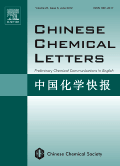
CHINESE CHEMICAL LETTERS
Exploring Multidisciplinary Frontiers in Chemical Research.CHINESE CHEMICAL LETTERS, published by Elsevier Science Inc, is a premier journal in the field of chemistry, notably recognized for its focus on innovative research in multidisciplinary areas of the discipline. With its ISSN 1001-8417 and E-ISSN 1878-5964, this journal has established itself as a valuable resource for academics since its inception in 1996, with coverage extending to 2024. Categorized in the top tier (Q1) for Chemistry (miscellaneous), it ranks an impressive #37 out of 408 in Scopus's General Chemistry category, reflecting its significant influence and contribution to the field, with a remarkable 91st percentile ranking. Though it does not currently offer open access, CHINESE CHEMICAL LETTERS remains accessible to researchers through institutional subscriptions and provides crucial insights and advancements in chemical research, making it an essential publication for professionals and students aiming to stay at the forefront of chemical sciences.

Eurasian Journal of Chemistry
Empowering Knowledge Sharing in ChemistryEurasian Journal of Chemistry is an emerging open-access journal published by KARAGANDA STATE UNIVERSITY in Kazakhstan. With a focus on the diverse and dynamic field of chemistry, this journal aims to disseminate cutting-edge research and innovative findings from various branches of chemistry, engaging a global audience of researchers, professionals, and students. Despite its recent inception in 2023, the journal is strategically positioned within the field, currently ranked in the fourth quartile of Scopus for General Chemistry, indicating its potential for growth and contribution to the scientific community. The ISSN of the journal is 2959-0663 with an electronic counterpart of 2959-0671, ensuring wide accessibility to its rich content. With an open-access model, the Eurasian Journal of Chemistry promotes the sharing of knowledge and advances in research to foster collaboration and inspiration across the globe.
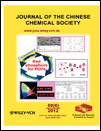
JOURNAL OF THE CHINESE CHEMICAL SOCIETY
Advancing Chemistry Through Innovative ResearchJOURNAL OF THE CHINESE CHEMICAL SOCIETY, published by WILEY-V C H VERLAG GMBH, is a vital resource in the field of chemistry, focusing on a broad array of topics pertinent to general chemistry and its advancing sub-disciplines. Established in 1954 and running through 2024, this journal serves as a significant platform for the dissemination of high-quality research, showcasing innovative findings and developments within the chemical sciences. With its Q3 category ranking and positioning at Rank #203 in General Chemistry per Scopus, it reflects the journal's commitment to research excellence and impact. While not an open-access publication, it ensures accessibility to a global audience, making it an essential tool for researchers, professionals, and students alike seeking to stay informed and engaged in the evolving landscape of chemistry.
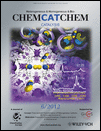
ChemCatChem
Pioneering Insights in Inorganic and Organic Chemistry.ChemCatChem is a leading international journal published by WILEY-V C H VERLAG GMBH that has been making significant contributions to the fields of catalysis, inorganic and organic chemistry, as well as physical and theoretical chemistry since its inception in 2009. With an established reputation for excellence, this journal holds commendable rankings in various categories, including Q1 in Inorganic Chemistry and Q1 in Organic Chemistry, demonstrating its pivotal role in advancing scientific knowledge and innovation. Notably, it has achieved a high Scopus ranking, securing 10th place out of 79 in Inorganic Chemistry, among others, showcasing its influence and quality. Although open access options are not available, the journal offers cutting-edge research articles, reviews, and insights that are vital for researchers, professionals, and students aiming to stay at the forefront of chemical science. With its address rooted in Weinheim, Germany, and convergence projected to continue until 2024, ChemCatChem remains a dynamic platform for disseminating vital advancements within the chemical community.

PHOSPHORUS SULFUR AND SILICON AND THE RELATED ELEMENTS
Exploring Innovations in Phosphorus, Sulfur, and SiliconPHOSPHORUS SULFUR AND SILICON AND THE RELATED ELEMENTS, published by Taylor & Francis Ltd, is a distinguished journal dedicated to advancing knowledge in the fields of Biochemistry, Inorganic Chemistry, and Organic Chemistry. Established in 1989, the journal has carved a niche in the scientific community by offering a platform for the publication of innovative research that explores the chemistry and applications of phosphorus, sulfur, silicon, and related elements. With an ISSN of 1042-6507 and an E-ISSN of 1563-5325, this journal provides access to valuable insights, albeit without open access options. Despite being positioned in the fourth quartile of its categories (Q4), it remains an essential resource for researchers, professionals, and students seeking to expand their understanding of these pivotal elements and their interactions. With a publishing horizon extending to 2024, the journal invites contributions aimed at pushing the boundaries of chemistry and fostering interdisciplinary dialogue.

ACTA CHIMICA SINICA
Advancing the Frontiers of Chemical KnowledgeACTA CHIMICA SINICA, published by SCIENCE PRESS, is a distinguished peer-reviewed journal in the realm of Chemistry, specifically focusing on general and miscellaneous chemistry fields. Since its inception in 1982, the journal has consistently contributed to the advancement of chemical research in China and beyond, maintaining a reputable standing within the academic community, evidenced by its 2023 Scopus ranking of #197 out of 408 in its category. With a current impact factor placing it in the Q3 quartile, ACTA CHIMICA SINICA aims to disseminate innovative research findings, covering a wide spectrum of topics within the discipline. Although it is not an open-access journal, it offers various access options through institutional subscriptions, ensuring that its high-quality content is available to a broad audience. Researchers, professionals, and students alike will find this journal a vital resource for keeping abreast of developments in the field and for contributing their own findings to an engaged scientific community.

STRUCTURAL CHEMISTRY
Fostering Excellence in Chemical Structure ResearchSTRUCTURAL CHEMISTRY is a premier journal published by SPRINGER/PLENUM PUBLISHERS, dedicated to advancing the study and understanding of the structural aspects of chemistry. With an ISSN of 1040-0400 and an E-ISSN of 1572-9001, this journal serves as a critical resource for researchers and professionals engaged in the fields of Condensed Matter Physics and Physical and Theoretical Chemistry. Since its inception in 1990, it has become an essential platform for disseminating high-quality research, featuring articles that explore innovative methodologies, experimental techniques, and theoretical frameworks. As evidenced by its Scopus rankings, including #192 in Condensed Matter Physics and #101 in Physical and Theoretical Chemistry, the journal occupies a respected position within the academic community, promoting interdisciplinary collaboration and insight. While it operates on a traditional subscription model, the journal continues to broaden its reach to foster knowledge exchange among scholars worldwide. With a commitment to excellence and relevance, STRUCTURAL CHEMISTRY remains a vital contributor to the scientific dialogue surrounding chemical structure and its myriad implications across various scientific disciplines.

RUSSIAN CHEMICAL REVIEWS
Fostering Collaboration in the World of ChemistryRUSSIAN CHEMICAL REVIEWS, published by the esteemed ND Zelinsky Institute of Organic Chemistry, RAS, stands as a prominent platform for disseminating high-quality research in the diverse field of chemistry. With an ISSN of 0036-021X and an E-ISSN of 1468-4837, this journal has earned its place in the Q1 quartile of Chemistry (miscellaneous) for 2023, reflecting its outstanding impact and rigorous peer-review process. The journal encompasses a wide array of topics within chemistry, providing critical reviews that advance understanding and foster collaboration among researchers, professionals, and students globally. With its consistent publication since 1970, RUSSIAN CHEMICAL REVIEWS not only serves as a valuable resource for the latest advancements in the field but also plays a crucial role in shaping future research directions. The journal is based in the Russian Federation, with its office located at 47 Leninsky Pr, Moscow 119991, RUSSIA. As an essential reference for those in the chemical sciences, it provides an ideal avenue for authors looking to publish impactful reviews that contribute to the broader scientific community.

JOURNAL OF THE INDIAN CHEMICAL SOCIETY
Empowering Chemists through High-Quality ResearchJournal of the Indian Chemical Society, published by Elsevier, stands as a cornerstone in the field of chemistry, particularly representing the rich chemical research emanating from India.
With a significant history dating back to its establishment, this journal encompasses diverse disciplines including Drug Discovery, Electrochemistry, Inorganic Chemistry, Organic Chemistry, and Physical and Theoretical Chemistry, reflecting the evolving landscape of chemical sciences.
Despite being positioned in the Q3 category across multiple quarters, the journal demonstrates promising rankings in various chemistries, highlighting its commitment to advancing the knowledge and application of chemical sciences. While currently not available as an open access journal, the Journal of the Indian Chemical Society is dedicated to providing a platform for high-quality research that fosters innovation and collaboration among researchers, professionals, and students worldwide.
With its continuous publication from 1973 to the present, it serves as an essential repository for cutting-edge findings and developments in chemistry, striving to connect academia with industry and practice.
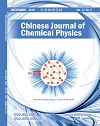
CHINESE JOURNAL OF CHEMICAL PHYSICS
Advancing the Frontiers of Chemical PhysicsChinese Journal of Chemical Physics, published by the Chinese Physical Society, serves as a pivotal platform for advancing the field of chemical physics, encompassing groundbreaking research and innovative methodologies since its inception in 2000. With an ISSN of 1674-0068 and E-ISSN of 2327-2244, the journal has established itself within the academic community, reflected in its 2023 classification as Q3 in Physical and Theoretical Chemistry and a Scopus rank of #142 out of 189, representing the 25th percentile in this competitive field. Although it does not currently operate as an open-access publication, its commitment to disseminating pivotal scientific research continues to attract scholars and professionals alike. The journal aims to bridge the gap between theoretical principles and practical applications in chemical physics, thereby fostering collaboration and innovation. By contributing significantly to the discourse in this dynamic domain, the Chinese Journal of Chemical Physics remains an essential resource for researchers, professionals, and students eager to stay abreast of contemporary developments.